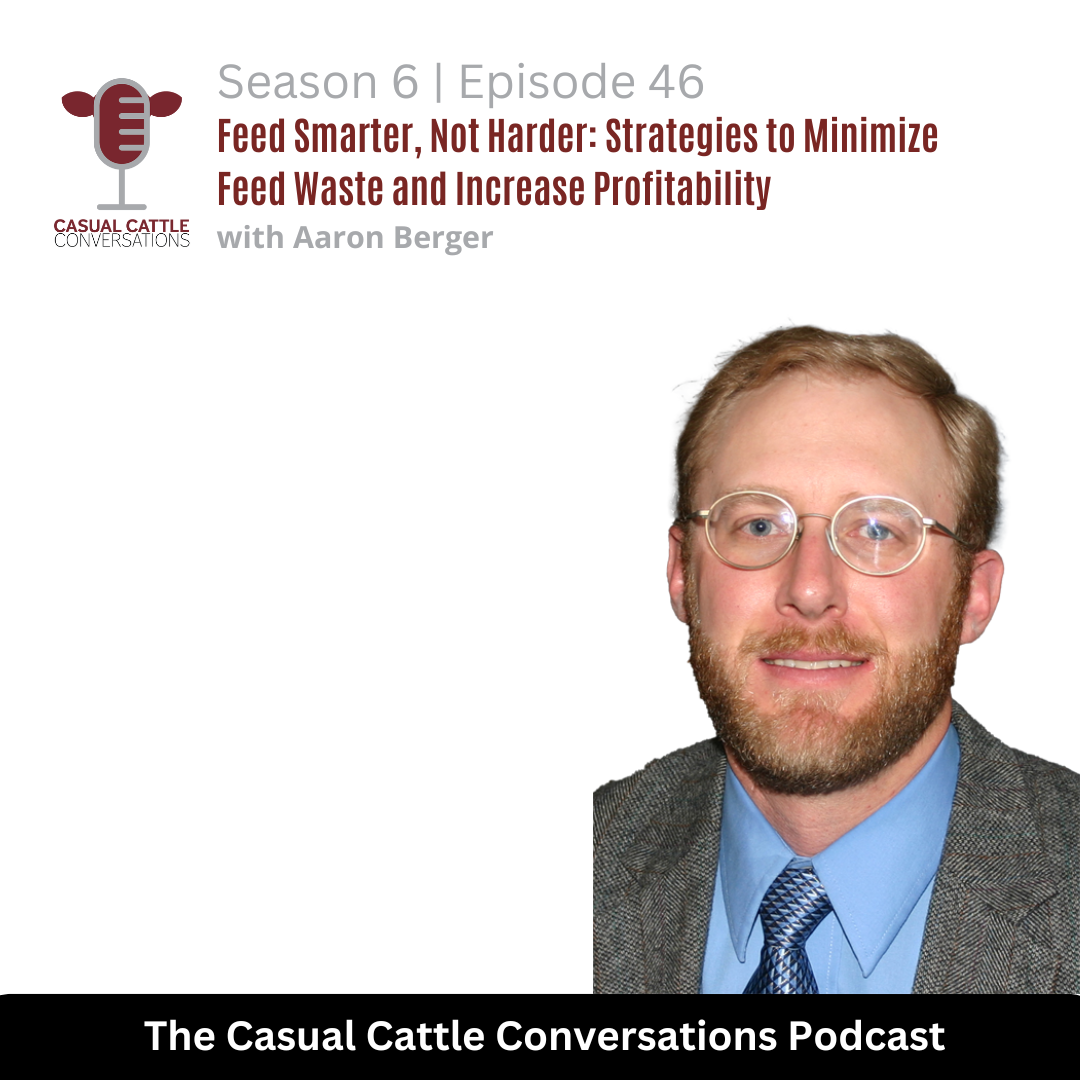Feed Smarter, Not Harder: Strategies to Minimize Feed Waste and Increase Profitability

Question of the Week: Do your actions fit in today’s economic environment?
One question Aaron Berger asks cattle producers in this podcast episode is if their current feeding strategies still pencil out in today’s economic environment.
It’s easy to do things the way the generation before us did because that’s what we know and are used to. However, we need to be putting numbers to it and keep our minds open to new ideas and possibilities. 
Winter is right around the corner and whether you want to acknowledge it or not, that means the end to grazing season and the beginning of feeding season for many cattle producers in northern regions. Feeding cattle more frequently means increased feed, fuel and labor costs for cattle producers too. Aaron Berger, extension educator for the University of Nebraska-Lincoln, shared tips and strategies to help cattle producers stretch their dollars when it comes to winter feeding during this episode of Casual Cattle Conversations.
The Cost of Feed Waste
The economic implications of feed waste are greater than you might think. Sure, you know how much you paid for hay and how much it cost to put it up, but are you calculating how much hay is lost in those expenses too?
“If you buy hay that is worth $180/ton and waste 30% of that. The true price is actually $260 /ton. Producers need to understand how much hay is lost through deterioration and when feeding the cow,” said Berger.
Reducing feed waste, like making any change on your cattle operation, starts by looking at your operation as a whole system.
“Ask yourself if your current system fits today’s economic environment compared to what it was 30 years ago,” said Berger.
Times have changed and amongst all the hustle and bustle of today’s world, it’s important that no parts of our operations are left behind with the breakeven cost of cows increasing to around $1,250 per calf weaned in some regions.
Feeding Strategies to Reduce Waste
For producers who feed round bales of hay as their primary feed source, rolling bales out and using a processor will lead to the most unconsumed feed. Any bale ring will help reduce waste but rings with cradles or solid bottoms are the best option if you are heavily focused on reducing waste or in a dry lot setting where the ground can’t absorb the nutrients from the feed and manure waste. Berger also encourages producers to think about limiting access to feed for 3-6 hours to reduce waste from round bales as well.
“I work with some people who are supplementing feed out of a bunk to compliment the hay that is being fed. Feeding grain out of a bunk pulls the cows away from the hay. Taking it a step further by adding an ionophore will help increase feed efficiency as well,” said Berger.
It all comes down to knowing your system and what changes you need to make and can easily start to implement.
Cattle producers who feed a totally mixed ration have other factors to consider when it comes to feed waste. Start by looking at what’s included in the ration to better understand how finely ground your ingredients are and if you have a wet source included.
“Think about your mix too. You want to make sure everything is mixed well so cattle can’t sort out ingredients and they are consuming the feed fed,” said Berger.
Like feeding round bales, bunks with bottoms can be used to reduce feed waste too, however you need to consider the whole picture.
“You need to know what your cost of the facilities is compared to the cost of feed waste. Similar to rolling out bales, waste in the right situation may have value. If you can spread out where you are feeding your livestock, feeding a TMR on the ground will help spread out manure and urine. This is valuable if the nutrients can be absorbed,” said Berger.
If you are feeding in a dry lot setting, remember many of those nutrients will not be effectively utilized and it is critical to reduce as much waste as possible with bunks and feeders.
When you look at your operation as a system and begin analyzing where you can cut costs, don’t forget to include fuel, equipment cost and labor in your calculations. This plays a part in which feeding strategy will be the most economical.
“With bale grazing, you can give cows three days’ worth of feed and know you will have more waste. However, your cost for labor, fuel and equipment use will be less,” said Berger.
At the end of the day, there are three main questions that cattle producers need to ask themselves to be proactive and reduce days spent feeding and feed waste. What do I have access to in terms of resources? Is there something I am not using right now that I could? Can I change my system? Remember to look at your operation as an entire system and business before making a change and don’t be afraid to ask around and learn from others during this process! Berger shared a quote at the end of our conversation that everyone needs to think about.
"If you want to make small changes, do things differently. If you want to make big changes, see things differently.” - Don Campbell from Meadow Lake, Saskatchewan







